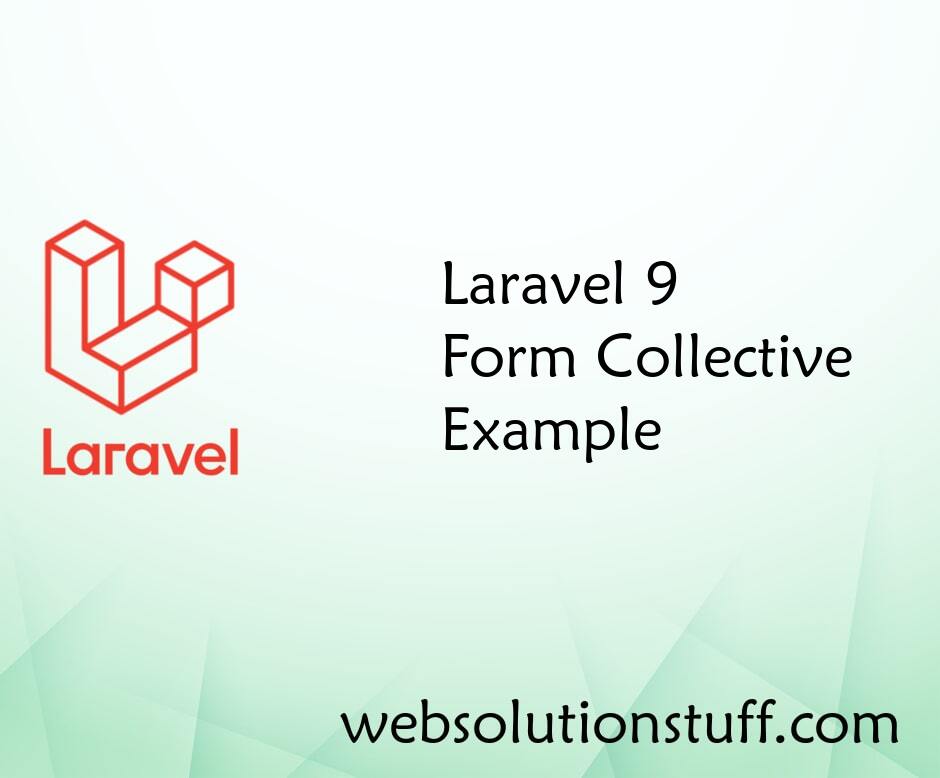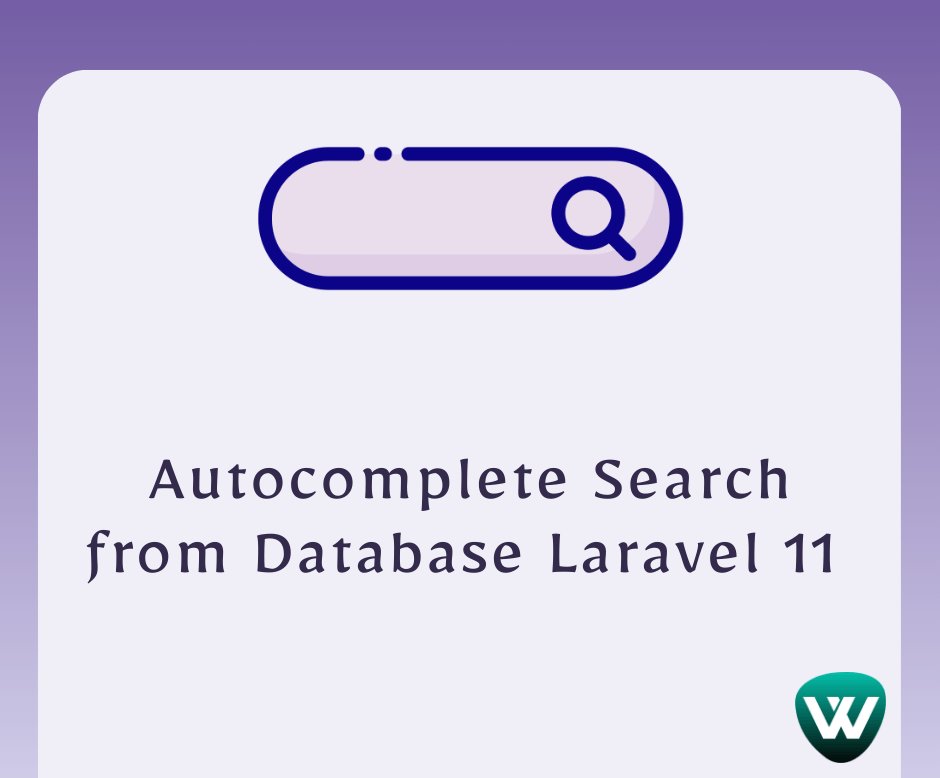How To Create Calendar Event In Laravel 9 Using AJAX
Websolutionstuff | Dec-28-2022 | Categories : Laravel PHP jQuery
In this article, we will see how to create a calendar event in laravel 9 using ajax. Here, we will learn how to add events in the full calendar in laravel using jquery ajax. In the calendar, we will perform crud operations in laravel 7, laravel 8, and laravel 9.
You can add the event, edit the event on the calendar and delete the event in the full calendar. Also, you can drag and drop the event from one date to another date.
So, let's see the laravel 9 full calendar example, how to add events in the full calendar in laravel 7/8/9, how to create an event in the calendar using jquery, and how to use fullcalendar in laravel 9.
Step 1: Install Laravel 9
Step 2: Create Model and Migration
Step 3: Create CalendarController
Step 4: Create Routes
Step 5: Create Blade File
Step 6: Run Laravel Application
In this step, we will install the laravel 9 application using the following command.
composer create-project laravel/laravel laravel9_fullcalendar_example
In this step, we will create migration using the following command.
php artisan make:migration create_events_table
Migration:
<?php
use Illuminate\Database\Migrations\Migration;
use Illuminate\Database\Schema\Blueprint;
use Illuminate\Support\Facades\Schema;
return new class extends Migration
{
/**
* Run the migrations.
*
* @return void
*/
public function up()
{
Schema::create('events', function (Blueprint $table) {
$table->id();
$table->string('title');
$table->date('start');
$table->date('end');
$table->timestamps();
});
}
/**
* Reverse the migrations.
*
* @return void
*/
public function down()
{
Schema::dropIfExists('events');
}
};
After that, we will migrate the table into the database using the following command.
php artisan migrate
Now, we will create the Event.php model. So, add the following code to that file.
app/Models/Event.php
<?php
namespace App\Models;
use Illuminate\Database\Eloquent\Factories\HasFactory;
use Illuminate\Database\Eloquent\Model;
class Event extends Model
{
use HasFactory;
/**
* The attributes that are mass assignable.
*
* @var array
*/
protected $fillable = [
'title', 'start', 'end'
];
}
Now, we will create CalendarController using the following command. So, add the following code to that file.
php artisan make:controller CalendarController
app/Http/Controllers/CalendarController.php
<?php
namespace App\Http\Controllers;
use Illuminate\Http\Request;
use App\Models\Event;
class CalendarController extends Controller
{
/**
* Write code on Method
*
* @return response()
*/
public function index(Request $request)
{
if($request->ajax()) {
$data = Event::whereDate('start', '>=', $request->start)
->whereDate('end', '<=', $request->end)
->get(['id', 'title', 'start', 'end']);
return response()->json($data);
}
return view('fullcalendar');
}
/**
* Write code on Method
*
* @return response()
*/
public function ajax(Request $request)
{
switch ($request->type) {
case 'add':
$event = Event::create([
'title' => $request->title,
'start' => $request->start,
'end' => $request->end,
]);
return response()->json($event);
break;
case 'update':
$event = Event::find($request->id)->update([
'title' => $request->title,
'start' => $request->start,
'end' => $request->end,
]);
return response()->json($event);
break;
case 'delete':
$event = Event::find($request->id)->delete();
return response()->json($event);
break;
default:
info("Default");
break;
}
}
}
In this step, we will add routes in the web.php file.
routes/web.php
<?php
use Illuminate\Support\Facades\Route;
use App\Http\Controllers\CalendarController;
/*
|--------------------------------------------------------------------------
| Web Routes
|--------------------------------------------------------------------------
|
| Here is where you can register web routes for your application. These
| routes are loaded by the RouteServiceProvider within a group which
| contains the "web" middleware group. Now create something great!
|
*/
Route::controller(CalendarController::class)->group(function(){
Route::get('full-calendar', 'index');
Route::post('full-calendar-ajax', 'ajax');
});
Now, we will create a fullcalendar.blade.php file. So, add the following code to that file. Also, we will add fullcalendar jquery and CSS CDN files.
resources/views/fullcalendar.blade.php
<!DOCTYPE html>
<html>
<head>
<title>How To Create Calendar Event In Laravel 9 Using AJAX - Websolutionstuff</title>
<meta name="csrf-token" content="{{ csrf_token() }}">
<link href="https://cdn.jsdelivr.net/npm/[email protected]/dist/css/bootstrap.min.css" rel="stylesheet">
<script src="https://cdnjs.cloudflare.com/ajax/libs/jquery/3.1.1/jquery.min.js"></script>
<link rel="stylesheet" href="https://cdnjs.cloudflare.com/ajax/libs/fullcalendar/3.9.0/fullcalendar.css" />
<script src="https://cdnjs.cloudflare.com/ajax/libs/moment.js/2.24.0/moment.min.js"></script>
<script src="https://cdnjs.cloudflare.com/ajax/libs/fullcalendar/3.9.0/fullcalendar.js"></script>
<script src="https://cdnjs.cloudflare.com/ajax/libs/toastr.js/latest/toastr.min.js"></script>
<link rel="stylesheet" href="https://cdnjs.cloudflare.com/ajax/libs/toastr.js/latest/toastr.min.css" />
</head>
<body>
<div class="container">
<h1>How To Create Calendar Event In Laravel 9 Using AJAX - Websolutionstuff</h1>
<div id='calendar'></div>
</div>
<script type="text/javascript">
$(document).ready(function () {
var SITEURL = "{{ url('/') }}";
$.ajaxSetup({
headers: {
'X-CSRF-TOKEN': $('meta[name="csrf-token"]').attr('content')
}
});
var calendar = $('#calendar').fullCalendar({
editable: true,
events: SITEURL + "/full-calendar",
displayEventTime: false,
editable: true,
eventRender: function (event, element, view) {
if (event.allDay === 'true') {
event.allDay = true;
} else {
event.allDay = false;
}
},
selectable: true,
selectHelper: true,
select: function (start, end, allDay) {
var title = prompt('Event Title:');
if (title) {
var start = $.fullCalendar.formatDate(start, "Y-MM-DD");
var end = $.fullCalendar.formatDate(end, "Y-MM-DD");
$.ajax({
url: SITEURL + "/full-calendar-ajax",
data: {
title: title,
start: start,
end: end,
type: 'add'
},
type: "POST",
success: function (data) {
displayMessage("Event Created Successfully");
calendar.fullCalendar('renderEvent',
{
id: data.id,
title: title,
start: start,
end: end,
allDay: allDay
},true);
calendar.fullCalendar('unselect');
}
});
}
},
eventDrop: function (event, delta) {
var start = $.fullCalendar.formatDate(event.start, "Y-MM-DD");
var end = $.fullCalendar.formatDate(event.end, "Y-MM-DD");
$.ajax({
url: SITEURL + '/full-calendar-ajax',
data: {
title: event.title,
start: start,
end: end,
id: event.id,
type: 'update'
},
type: "POST",
success: function (response) {
displayMessage("Event Updated Successfully");
}
});
},
eventClick: function (event) {
var deleteMsg = confirm("Do you really want to delete?");
if (deleteMsg) {
$.ajax({
type: "POST",
url: SITEURL + '/full-calendar-ajax',
data: {
id: event.id,
type: 'delete'
},
success: function (response) {
calendar.fullCalendar('removeEvents', event.id);
displayMessage("Event Deleted Successfully");
}
});
}
}
});
});
function displayMessage(message) {
toastr.success(message, 'Event');
}
</script>
</body>
</html>
Now, run the laravel 9 fullcalendar crud operation using ajax.
php artisan serve
You might also like:
- Read Also: How To Get Data Between Two Dates In Laravel 9
- Read Also: Date Range Filter In Datatable jQuery Example
- Read Also: How To Disable Weekends In jQuery Datepicker
- Read Also: Bootstrap Daterangepicker Example
Recommended Post
Featured Post

Laravel 9 Form Collective Exam...
In this article, we will see laravel 9 form collective example. Here, we will learn how to use collective form and...
Jan-20-2023

Autocomplete Search from Datab...
Hello, laravel web developers! In this article, we'll see how to autocomplete a search from a database in larav...
Jun-24-2024

Get User Location using IP Add...
Hello developers! In this article, we'll see how to get user location using an IP address in laravel 11. Here,...
May-01-2024

Carbon Add Years To Date In La...
In this article, we will see carbon add years to date in laravel 9. Carbon provides addYear() and addYears() functi...
Nov-21-2022